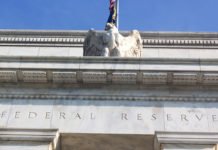Key insights from the week that was.
Softer updates around the Australian consumer and inflation have strengthened the case for a pause at next week’s April RBA policy meeting. Global market sentiment meanwhile improved over the week as concerns over US and European banks eased.
Australian retail sales posted an as expected gain of 0.2% in February after a turbulent two months. The lift in nominal spending across department stores, clothing and food-related retail more than offset the flat result in household goods and weakness in ‘other retail’ items. Looking through recent volatility, it becomes clear the nominal retail trend is weakening, with sales down 1.5% on a rolling three-month basis. Should this subdued trend persist into March, nominal retail sales in Q1 are likely to be little changed from Q4; and, given the elevated rate of inflation amongst retail components, retail sales volumes are poised to contract materially in the quarter.
Following a 0.4% decline in January, the Monthly CPI Indicator surprised to the downside again in February, a modest 0.2% rise in the month lowering the annual rate of inflation from 7.4% to 6.8%, well below the consensus estimate of 7.2%. Compared to the average monthly increase of 0.9% over the last three months of 2022, a moderation in the pace of inflation has clearly materialised. At this stage, the deceleration in annual inflation between January and February looks to be relatively broad-based, with easing evident across food (6.8% vs. 7.4%); housing (9.9% vs. 10.4%); transportation (5.6% vs. 6.1%) and household contents/services (6.6% vs. 6.8%). The main surprise in the month came from holiday travel which notably fell 14.6% in February after a 7.2% decline in January. Consequently, annual inflation in the broader recreation category has more than halved over the last two months, from 14.4% to 6.4%.
As outlined by Chief Economist Bill Evans, the recent data flow complements earlier updates on the labour market and business confidence, putting forward a strong case for the RBA to pause at the April Board meeting. The RBA will also benefit from the fact that their meeting schedule has largely avoided the intense periods of uncertainty around the banking sector, with global sentiment having steadily improved over the course of this week (see below), allowing the Board to remain focussed on domestic developments. That said, we continue to expect the Q1 CPI release to report uncomfortably high underlying inflation, warranting a final 25bp rate hike at the May Board meeting. Policy should then remain on hold over the remainder of 2023 as inflation continues its gradual descent. 150bps of rate cuts are then expected through 2024 and 2025 to return policy to a near-neutral setting.
Offshore, data was of limited significance this week. In the US, the Dallas and Richmond Fed business surveys remained weak in March, while the trade deficit held wide in February. Another modest decline was also seen in S&P CoreLogic CS 20-city house prices in January (-0.4%), slowing the annual rate of growth from 4.6% to 2.6%. The volume of pending homes sales meanwhile surprised by holding up in February after January’s jump higher (respectively 0.8% and 8.1%); however, versus a year ago, they remain 21% lower. Notably, despite recent market volatility and lingering uncertainty over the banking sector, Conference Board consumer confidence improved slightly in March, remaining well above its lows of 2020-21 and 2022 but also a long way from prior peak levels. Expectations were the driving force in March, offsetting a small decline in current conditions. Arguably this is due to a combination of the robust health of the US labour market and a 10-year yield (and consequently 30-year mortgage rate) off peak levels. Note the main US data release for this week is still to come, with the February PCE data due this evening.
Over the week, FOMC members’ perspective on the outlook is unchanged, their focus remaining on the need for a sustained period of contractionary policy to quell inflation risks. Developments around the banking sector have generally been constructive, with Silicon Valley Bank bought by First Citizens Bank and the market increasingly of the view that, if necessary, authorities will provide further support. Market pricing for the FOMC is split, with a roughly 50% chance of another 25bp hike by the FOMC in May, but then three-to-four 25bp rate cuts priced by January 2024. Recognising the risks with regards to inflation but also the material credit tightening underway, we believe the prudent course for the FOMC is to remain on hold from May 2023 until March 2024 then cut back towards neutral through to mid-2025.












